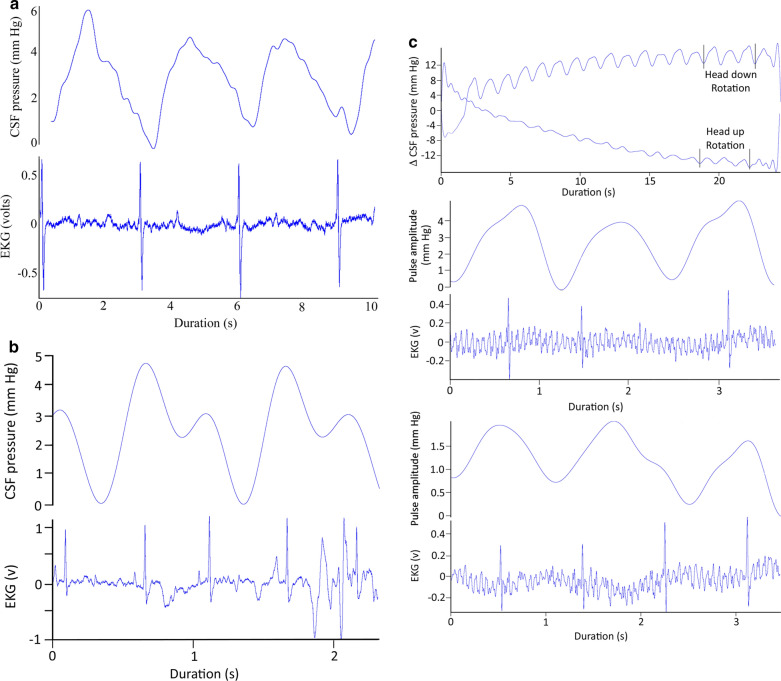Fig. 3.
a Simultaneous recordings of CSF pressure wave (upper trace) and EKG (lower trace) from an anesthetized, horizontal, Alligator mississippiensis. This 10 s segment is a portion of a 30 s trial pulled out to represent the size, shape, and temporal patterns of "typical" CSF pulsations in Alligator. b Simultaneous recordings of CSF pressure wave (upper trace) and EKG (lower trace) from an anesthetized, horizontal, A. mississippiensis exhibiting tachycardia. Note that compared to CSF pulsations at lower heart rates (a), these CSF pulses occur sooner after the R peak, are shorter in duration, and appear to "piggy back" on the diastolic slope of earlier pulses. c Influence of orthostatic gradient on CSF pulsations in A. mississippiensis. Upper traces are CSF pressures recorded during two 15° rotations in opposite directions; note that both traces start at 0 on the Y axis. Two series of terminal pulsations were taken from the end of the trials (indicated by the black vertical lines). The CSF pulsations and simultaneous EKG recordings from the head down rotation are shown in the middle of the figure, those from the head up rotation are shown in the bottom of the figure. Note the different scales used for the CSF pulsations from the head up and head down rotations

